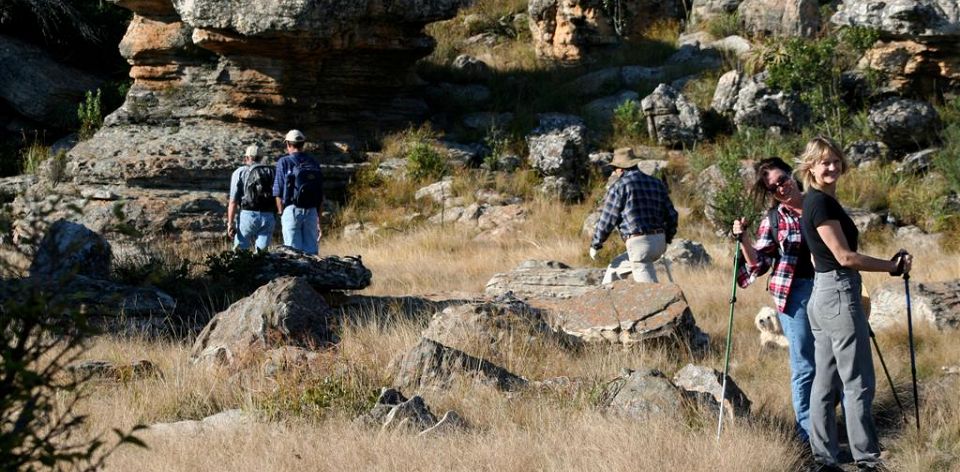
The All-New Renault Duster is Here
After a two-year absence from the South African market, the mighty Renault Duster is back...
 12 March 2025
12 March 2025 
It might feel like winter is synonymous with staying indoors and watching movies while longing for the days of sunshine. There’s no better way to replenish the soul and savour the crisp winter air than on a hike. Whether you prefer a strenuous workout or relaxed stroll, winter is often the best time for nature lovers to take advantage of hiking trails aren’t accessible during the summer. So, if you’re the active type and want to keep the blood pumping throughout winter, we suggest trying one of these 5 hiking trails.
 Get active and join the Fanie Botha Trail in Sabie. The hiking trail is thought as one of the best trails in the country. It was one of the original hiking trails in South Africa and was supposed to be the beginning of a network of trails stretching from the Soutpansberg in the eastern escarpment in the Cape. The scenery is breathtaking but to savour the magnificent vistas one encounters some fairly strenuous sections. The hike is relatively difficult although you can choose to do a two, three, four or even five-day hike totaling 72 kilometres depending on your level of fitness. It starts with a short walk from the parking area at Ceylon Forest station to the Ceylon Hut, which has electricity, bunk beds and mattresses, braai area with wood supplied, flush toilets and cold showers. However, while you’re here, you will enjoy breathtaking scenery, grassy fields, forest, gorges, pools, waterfalls and an abundance of birdlife. Some of the birds you may see along the way include the Red-Collared Widow, cuckoo, Malachite sunbird, Blue cranes, kingfishers and many more.`
Get active and join the Fanie Botha Trail in Sabie. The hiking trail is thought as one of the best trails in the country. It was one of the original hiking trails in South Africa and was supposed to be the beginning of a network of trails stretching from the Soutpansberg in the eastern escarpment in the Cape. The scenery is breathtaking but to savour the magnificent vistas one encounters some fairly strenuous sections. The hike is relatively difficult although you can choose to do a two, three, four or even five-day hike totaling 72 kilometres depending on your level of fitness. It starts with a short walk from the parking area at Ceylon Forest station to the Ceylon Hut, which has electricity, bunk beds and mattresses, braai area with wood supplied, flush toilets and cold showers. However, while you’re here, you will enjoy breathtaking scenery, grassy fields, forest, gorges, pools, waterfalls and an abundance of birdlife. Some of the birds you may see along the way include the Red-Collared Widow, cuckoo, Malachite sunbird, Blue cranes, kingfishers and many more.`

The starkly beautiful 39.5 kilometres three-day klipspringer Hiking Trail in the Augrabies National Park, Northern Camp offers panoramic views over the rocky and lunar-like landscapes of the park.The circular hike’s three days are divided into roughly equal distances, between 12.5 kilometres and 14 kilometres.
Day one is regarded as the longest of the three, day two is most spent along the banks of the Orange River and is the hottest and day three is the most taxing. Only opens between the months of April and October, as it can get ridiculously hot in this part of the Northern Cape, the Klipspringer trail rangers through a dry, hot climate with views of plummeting gorges and the respite of the rivers. The self-guided trail is on semi-arid terrain and as a result is sometimes difficult to follow.
There are several trail signs, cairns and rock piles that serve as indicators. You’ll be in a group of between two and 12 people and overnight are spent in rustic huts that contain bunk beds and mattresses, toilet and drinking water, firewood as well as basic cooking utensils. There is no electricity and no showers. Everything else you need – including food, crockery, cutlery and sleeping bags – you must bring.
The highlights of the hike are the granite rock sculptures, hewn by water, wind and extreme temperatures, the mighty Orange River and the falls. However, watch out for baboons, monkey, the tiny steenbok antelope and lots of bird species. As you hike the Orange River, try to spot kingfishers and the stately fish eagle and throughout the three days of hiking; take note of the fascinating indigenous flora as well. Other animals that you might see include caracal (rooikat) and if you’re lucky you will also see a leopard. Animals you will definitely see besides the Klipspringer include the brightly colored Augrabies Flat lizard, various antelope species, rock hyraxes and 21 species of snake (look out for them in the early mornings or late afternoon). You’ll hike in a group of between two and 12 people and overnight in rustic huts with bunks and mattresses, toilets and braai facilities, a few cooking pots, water and firewood, but no electricity. Thinking of exploring this beautiful landscape, hire a car in South Africa to accommodate your travel.

